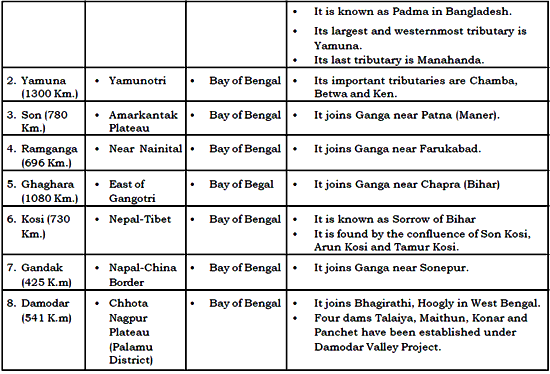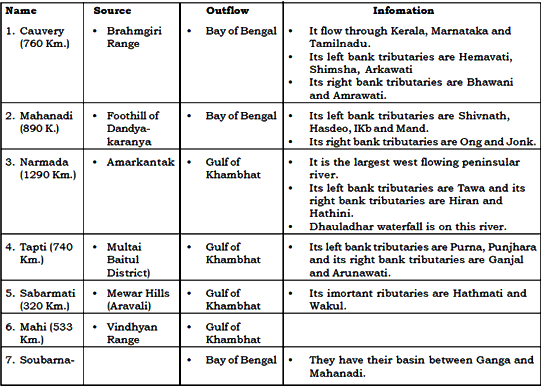NEW! The Gist (APR-24) | E-BOOKS |
(IGP) IAS Pre: GS - Gist of Indian Year Book - Land and The People
Gist of Indian Year Book
Land and The People
- It is the 7th largest country in the world.
- India covers an area of 32,87,263 sq k.
- The mainland extends between latitudes 804’ and 3706’ north, lngitudes 6807’ and 97025’ east and measures about 3,214 km from north to south between the extrem latitudes and about 2,933 km from east to wet between the extreme longitudes.
- It has a land frontier of about 15,200 km.
- the total length of the coastline of the mainland, Lakshadweep Islands and Andaman & Nicobar Islands is 7,516.6 km.
- India is the tenth industrialized country in the world.
- It is the sixth nation to have gone into outer space.
- India lies entirely in the northern hemisphere.
- Sri Lanka is separated from India by a narrow channel of sea formed by trhe Palk Strait and the Gulf of Mannar.
- India is the world largest, oldest, continuous civilization.
- India never invaded any country in her last 10000 years of history.
- India invented the Number System. Zero was invented by Aryabhatta.
- The World’s first university wwas established in Takshashila in 700BC. More than 10,500 students from all over the world studied more than 60 subjects. The University of Nalanda built in the 4th century BC was one of the gretest achievements of ancient India in the field of education.
- Sanskrit is the mother of all the European languages. Sanskrit is the most suitable language for computer software - a report in Forbes magazine, July 1987.
- Ayurveda is the earliest school of medicine known to humans. Charaka, the father of medicine consolidated Ayurveda 2500 years ago. Today Ayurveda is fast regaining its rightful place in our civilization. • The art of Nagivation was born in the river Sindhu 6000 years ago. The very world Navigation is derived from the Sanskrit word NAVGATIH. The world navy is also derived from Sanskrit ‘Nou’.
- Bhaskaracharya calculated the time taken by the earth to orbit the sun hundreds of years before the astronomer Smart. Time taken by earth to orbit the sun : (5th cenury) 365.258756484 days.
- The value of pi was first calculated by Budhayana, and the explained the concept of what is known as the Pythagorean Theorem. He descovered this in the 6th century long before the European mathematicians.
- Algebra, trigonometry and calculus came from India. Quadratic equations were by Sridharacharya in the 11th century. The largest numbers the Greeks and the Romans used were 106 whereas Hindus used numbers as big as 10**53 (10 to the power of 53) with specific names as early as 5000 BC during the Vedic period. Even today, the largest used number is Tera 10*12(10 to the powre of 12).
- Sushruta is the father of surgery. 2600 years ago he and health scientists of his time conducted complicated surgeries like ceasreans, cataract, artificial limbs, fractures, urinary stones and even plastic surgery and brain surgery. Usage of anesthesia was well known in ancient India. Over 125 surgical equipmentwere used. Deep knowledge of anatomy, physiology, etiology, embryology, digestion, metabolism, genetics and immunity is also found in many texts.
- The four religions born in India, Hinduism, Buddhism, Jainism, and Sikhism, are followed by 25% of the world’s population.
- There are 300,000 active mosques in India, more than in any other country, including the Muslim world.
- The name ‘India’ is derived from the River Indus, the valleys around which were the home of the early settlers. The Aryan worshippers referred to the river Indus as the Sindhu.
- The place value system, the decimal system was developped in India in 100 BC.
- India is the only English speaking nation in the world.
- India is the only country other than US and Japan, to have built a super computer indigenously.
- The World’s FirstGranite Temple is the Brihadeswara Temple at Tanjavur, Tamil Nadu. The shikhara of the temple is made from a single 80-tonner piece of granite. This magnificent temple was built in just five years, (between 1004 AD and 1009 AD) during the reign of Rajaraja Chola.
- The largest religious building in the world is Angkor Wat, a Hindu Temple in Cambodia built at the end of the 11th century.
- The Vishnu Temple in the city of Tirupathi built in the 10th century, is the world’s largest religious pilgrimage destination. Larger than either Rome or Mecca, an average of 30,000 visitors donate $6 million (US) to the temple everyday.
- Martial Arts were first created in India, and later spread to Asia by Buddhist missionaries.
- Yoga has its origins in India and has existed for over 5,000 years.
Physical Features
- The plains of the Ganga and the Indus are one of the world’s greatest stretches of flat alluvium and also one of the most densely populated areas on the earth.
- The Peninsular Plateau is marked off from the palins of the Ganga and the Indus by a mass of mountain and hill ranges varying from 460 to 1,220 metres in height.
- Prominent among these are the Aravalli, Vanidhya, Satpura, Maikala and Ajanta.
- The southern point of plateau is formed by the Nilgiri Hills where the Eastern and the Western Ghats meet.
- The Cardamom Hills lying beyond may be regarded as a continuation of the Western Ghats.
Geological Structure
- The Indo-Ganga plains are a great alluvial tract that separate the Himalayas in the north from the Peninsula in the south.
- The Peninsula is a region of relative stability and occasional seismic distubances.
- Highly metamorphosed rocks of the earliest periods, dating back as far as 380 crore years, occur in the area; the rest being covered by the coastal-bearing Gondwana formations, lava flows belonging to the Deccan Trap formation and younger sediments.
River Systems
The river systems of India can be classified into four groups viz.,
- Himalayan rivers
- Deccan rivers
- Coastal rivers, and
- Rivers of the inland
- The Himalayan rivers are formed by melting snow and glaciers and therefore, continuously flow throughout the year.
- The Deccan rivers on the other hand are rainfed and therefore fluctucate in volume. Many of these are non-perennial.
- Coastal streams, especially on the west coast are short in length and have limited catchment areas. Most of them are non-perennial.
- The streams of inland drainage basin of western Rajasthan are few and far apart.
River System of India
I. The Indus System
| Name | Source | Outflow | Information |
| 1. Indus (2900 Km.) |
|
|
|
| 2. Jhelum (1,800 Km.) |
|
|
|
| 3. Chenab (1,800 km.) |
|
|
|
| 4. Ravi (759 km.) |
|
|
|
| 5. Satluj (1050 km) in India |
|
|
|
| 6. Beas (460 km. in India) |
|
|
|
II. The Ganga System


III. The Brahmaputra System
| Name | Source | Outflow | Infomation |
| Brahmaputra or Tsangpo (2900 Km.) |
|
|
|
IV. The Godvari System
| Name | Source | Outflow | Infomation |
| Godavari (1,450 Km.) |
|
|
|
V. The Krishna System
| Name | Source | Outflow | Infomation |
| Krishna (1,290 Km.) |
|
|
|
Other Penisular Rivers

Flora
- India can be divided into eight distinct-floristic-regions, namely,
- the western Himalayas
- the eastern Himalayas
- Assam
- the Indus plain
- the Ganga plain
- the Deccan
- Malabar 8. the Andamans.
- The Western Himalayan region extends from Kashmir to Kumaon.
- Its temperate zone is rich in forests of chir, pine, other conifers and broad-leaved temperate trees. Higher up, forests of deodar, blue pine, spruce and silver fir occur.
- The alpine zone extends fromthe upper limit of temperate zone of about 4,750 metres of even highter.
- The characteristic trees of this zone are high-level silver fir, silver birchand junipers.
- The easternHimalayan region extends from Sikkim eastwards and embraces Darjeeling, Kurseong and the adjacent tract.
- The temperate zone has forests of oaks, laurels, maples, rhododendrons, alder and birch. Many conifers, junipers and dwarf willows also grow here.
- The Assam region comprises the Brahamaputra and the Surma valleys with evergreen forests, occasional thick clumps of bamboos and tall grases.
- The Indus plain region comprises the plains of Punjab, western Rajasthan and northern Gujarat.
- It is dry and hot and supports natural vegetation.
- The Ganga plain region covers the area which is alluvial plain and is under cultivationfor wheat, sugarcane and rice.
- The Deccan region comprises the entire table land of the Indian Peninsula and supports vegetation of various kinds fromshurbs jungles to mixed deciduous forests.
- The Malabar region covers the excessively humid belt ofmountain country parallel to the west coast of the Peninsula.
- Besides being rich in forest vegetation, this region produces important commercial crops, such as oconut, betel nut, pepper, coffee and tea, rubber and cashew nut.
- The Andaman region abounds in evergreen, mangrove, beach and diluvial forests.
- Available data place India in the tenth position in the world and fourth in Asia in plant diversity.
- From about 70 per cent geographical area surveyed so far, over 46,000 species of plants have been described by the Botanical Survey of India (BSI), Kolkata.
- The vascular flora, which forms the conspicuous vegetation cover, comprises 15,000 species.
- More than 800 plant species of ethno-botanical interest have been collected and identified at different centres.
- About 1,336 plant species are considered vulnerable and endangered.
- About 20 species of higher plants are categorised as possibly extinct as these have not been sighted during the last 6-10 decades.
- The BSI brings out an inventory of endagered plants in the form of a publication titled Red Data Book.
Fauna
- The Zoological Survey of India (ZSI), with its headquarters inKolkata and 16 regional stations is responsible for surveying the faunal resources of India.
- India has great variety of fauna numbering over 90,000 scpecie. Anthropoda 69,906 is the biggest phyllum.
- Rivers and lakes harbour crocodiles and gharials, the latter being the only representative of crocodilian order in the world.
- The salt water crocodile is found along the eastern coast and in the Andaman and Nicobar Islands.
- A project for breeding crocodiles which started in 1974, has been instrument in saving the crocodile from extinction.
© UPSCPORTAL.COM

